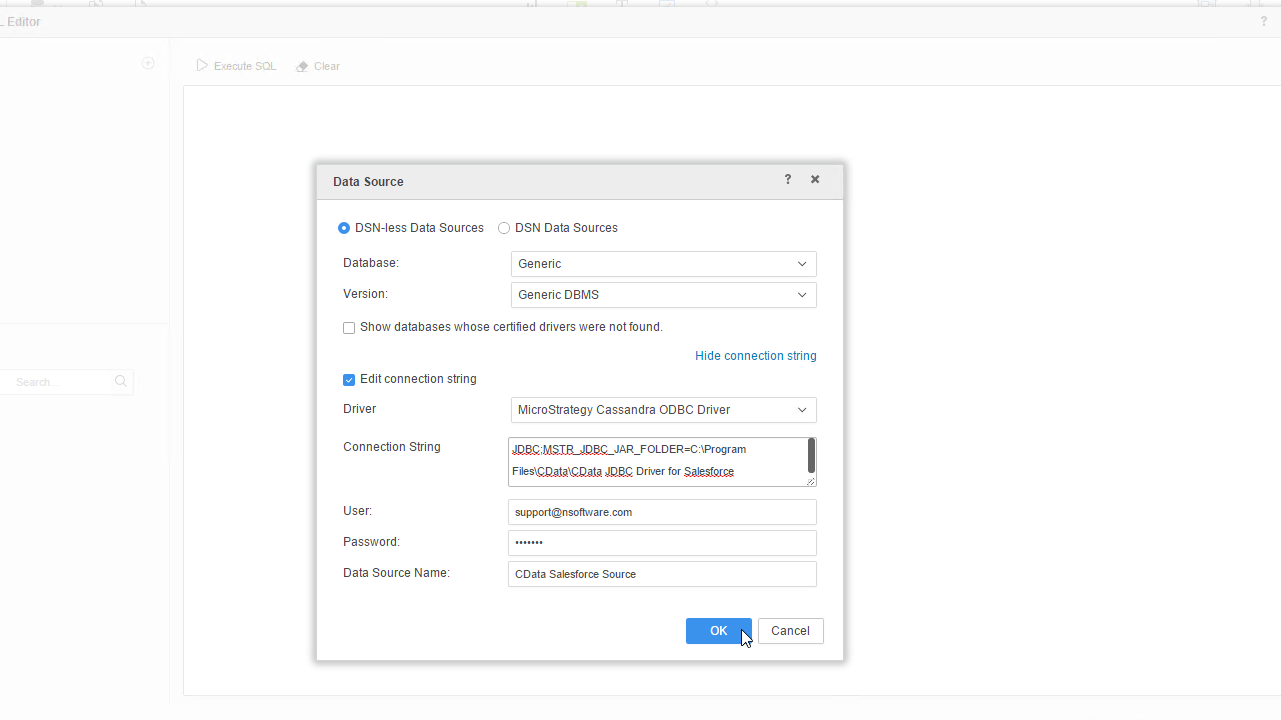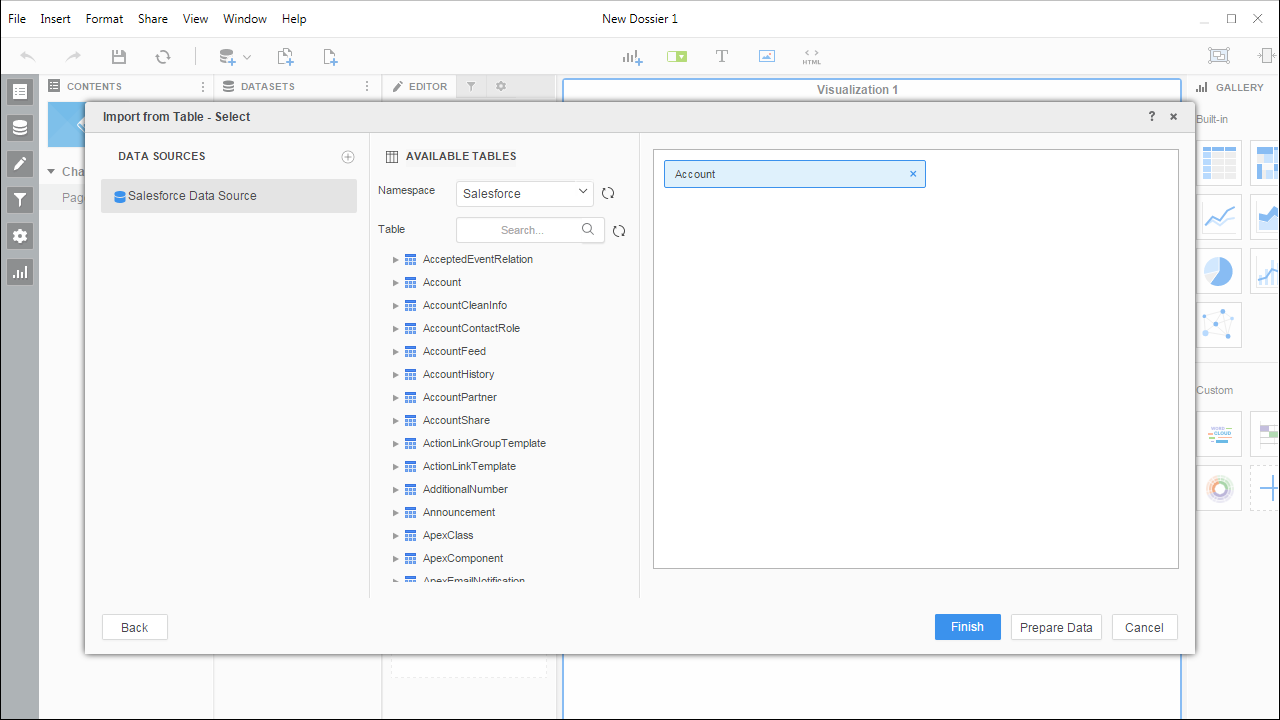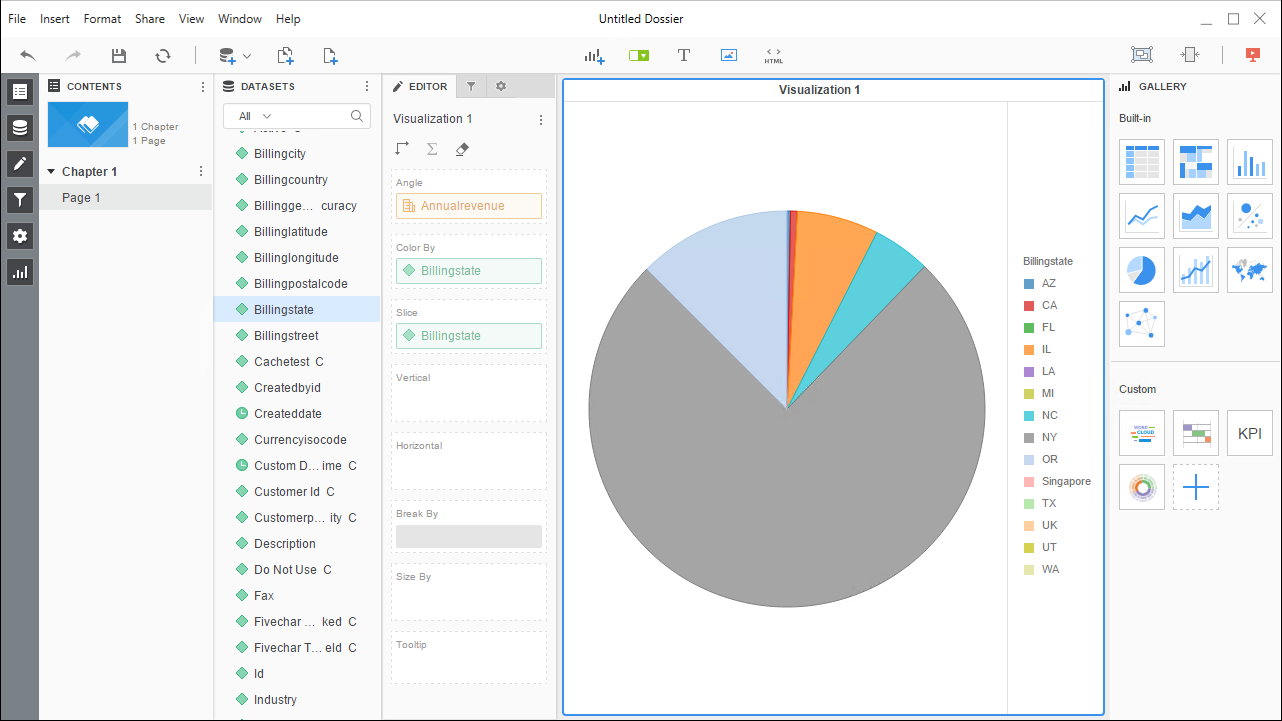Discover how a bimodal integration strategy can address the major data management challenges facing your organization today.
Get the Report →Use the CData JDBC Driver for SAP Ariba Procurement in MicroStrategy Desktop
Connect to SAP Ariba Procurement data in MicroStrategy Desktop using the CData JDBC Driver for SAP Ariba Procurement.
MicroStrategy is an analytics and mobility platform that enables data-driven innovation. When you pair MicroStrategy with the CData JDBC Driver for SAP Ariba Procurement, you gain database-like access to live SAP Ariba Procurement data from MicroStrategy, expanding your reporting and analytics capabilities. In this article, we walk through adding SAP Ariba Procurement as a data source in MicroStrategy Desktop and creating a simple visualization of SAP Ariba Procurement data.
The CData JDBC Driver offers unmatched performance for interacting with live SAP Ariba Procurement data in MicroStrategy due to optimized data processing built into the driver. When you issue complex SQL queries from MicroStrategy to SAP Ariba Procurement, the driver pushes supported SQL operations, like filters and aggregations, directly to SAP Ariba Procurement and utilizes the embedded SQL engine to process unsupported operations (often SQL functions and JOIN operations) client-side. With built-in dynamic metadata querying, you can use native MicroStrategy data types to visualize and analyze SAP Ariba Procurement data.
Connect to and Visualize SAP Ariba Procurement Data using MicroStrategy Desktop
In addition to connecting to SAP Ariba Procurement in MicroStrategy enterprise products, you can connect to SAP Ariba Procurement in MicroStrategy Desktop. Follow the steps below to add SAP Ariba Procurement data as a dataset using JDBC and create visualizations and reports of SAP Ariba Procurement data.
- Open MicroStrategy Desktop and create a new dossier.
- In the datasets panel, click New Data, select Databases, and choose Select a Table as the Import Option.
- Add a new data source and choose the DSN-less data sources option.
- Choose Generic in the Database menu and Generic DBMS in the Version menu.
- Click the link to show the connection string and opt to edit the connection string. In the Driver menu, select MicroStrategy Cassandra ODBC Driver. (MicroStrategy requires a certified driver to interface through JDBC; the actual driver will not be used.)
- Set the connection string as follows and click OK:
- Add the JDBC keyword to the connection string.
- Set MSTR_JDBC_JAR_FOLDER to the path of the JAR file for the JDBC driver. (C:\Program Files\CData JDBC Driver for SAP Ariba Procurement\lib\ on Windows.)
- Set DRIVER to cdata.jdbc.saparibaprocurement.SAPAribaProcurementDriver, the driver class.
- Set URL to the JDBC URL for the SAP Ariba Procurement driver, setting the necessary connection properties.
In order to connect with SAP Ariba Procurement, set the following:
- ANID: Your Ariba Network ID.
- ANID: Specify which API you would like the provider to retrieve SAP Ariba data from. Select the Buyer or Supplier API based on your business role (possible values are PurchaseOrdersBuyerAPIV1 or PurchaseOrdersSupplierAPIV1).
- Environment: Indicate whether you are connecting to a test or production environment (possible values are TEST or PRODUCTION).
Authenticating with OAuth
After setting connection properties, you need to configure OAuth connectivity to authenticate.
- Set AuthScheme to OAuthClient.
- Register an application with the service to obtain the APIKey, OAuthClientId and OAuthClientSecret.
For more information on creating an OAuth application, refer to the Help documentation.
Automatic OAuth
After setting the following, you are ready to connect:
-
APIKey: The Application key in your app settings.
OAuthClientId: The OAuth Client Id in your app settings.
OAuthClientSecret: The OAuth Secret in your app settings.
When you connect, the provider automatically completes the OAuth process:
- The provider obtains an access token from SAP Ariba and uses it to request data.
- The provider refreshes the access token automatically when it expires.
- The OAuth values are saved in memory relative to the location specified in OAuthSettingsLocation.
Built-in Connection String Designer
For assistance in constructing the JDBC URL, use the connection string designer built into the SAP Ariba Procurement JDBC Driver. Either double-click the JAR file or execute the jar file from the command-line.
java -jar cdata.jdbc.saparibaprocurement.jarFill in the connection properties and copy the connection string to the clipboard.
![Using the built-in connection string designer to generate a JDBC URL (Salesforce is shown.)]()
When you configure the JDBC URL, you may also want to set the Max Rows connection property. This will limit the number of rows returned, which is especially helpful for improving performance when designing reports and visualizations.
A typical connection string follows:
JDBC;MSTR_JDBC_JAR_FOLDER=PATH\TO\JAR\;DRIVER=cdata.jdbc.saparibaprocurement.SAPAribaProcurementDriver;URL={jdbc:saparibaprocurement:ANID=AN02000000280;API=PurchaseOrdersBuyerAPI-V1;APIKey=wWVLn7WTAXrIRMAzZ6VnuEj7Ekot5jnU;AuthScheme=OAuthClient;};![Creating a new data source for SAP Ariba Procurement.]()
- Right-click on the new data source, and choose Edit catalog options.
- Edit the SQL Statement to SELECT * FROM SYS_SCHEMAS to read the metadata from the JDBC Driver.
- Select the new data source to view the available tables. You may need to manually click the search icon in the Available Tables section to see the tables.
- Drag tables into the pane to import them.
![Select tables to import.]() Note: Since we create a live connection, we can import whole tables and utilize the filtering and aggregation features native to the MicroStrategy products.
Note: Since we create a live connection, we can import whole tables and utilize the filtering and aggregation features native to the MicroStrategy products. - Click Finish and choose the option to connect Live. Live connections are possible and effective, thanks to the high-performance data processing native to CData JDBC Drivers.
- Choose a visualization, choose fields to display, and apply any filters to create a new visualization of SAP Ariba Procurement data. Data types are discovered automatically through dynamic metadata discovery. Where possible, the complex queries generated by the filters and aggregations will be pushed down to SAP Ariba Procurement, while any unsupported operations (which can include SQL functions and JOIN operations) will be managed client-side by the CData SQL engine embedded in the driver.
![Visualize SAP Ariba Procurement data.]()
- Once you are finished configuring the dossier, click File -> Save.
Using the CData JDBC Driver for SAP Ariba Procurement in MicroStrategy Desktop, you can easily create robust visualizations and reports on SAP Ariba Procurement data. Read our other articles for connecting to SAP Ariba Procurement data in MicroStrategy Developer and connecting to SAP Ariba Procurement data in MicroStrategy Web for more examples.








 Note: Since we create a live connection, we can import whole tables and utilize the filtering and aggregation features native to the MicroStrategy products.
Note: Since we create a live connection, we can import whole tables and utilize the filtering and aggregation features native to the MicroStrategy products.
